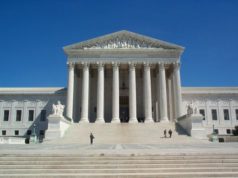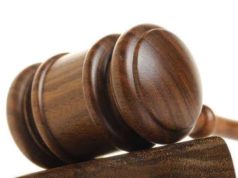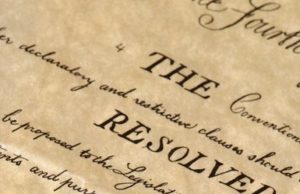Table of Contents

Introduction
The Supreme Court of the United States is the highest court in the land and serves as the final arbiter on matters of federal law. One of its primary functions is to hear and decide cases that are brought before it through its docket system. The Supreme Court docket is its calendar of cases that are scheduled for oral argument during a given term. Each year, the Supreme Court receives thousands of petitions for writs of certiorari, but only a small fraction, around 1-2%, are granted and added to the docket. This article will explore the Supreme Court dockets and the decisions it has made that relate to its docket system.
The Supreme Court Docket System
The Supreme Court docket system is an essential aspect of its operations, as it determines which cases the Court will hear and which it will not. Each year, the Court receives thousands of petitions for certiorari, but only a small fraction of these are granted. The docket system is used to manage and prioritize these cases while also ensuring that the Court can dedicate enough resources to the cases it decides to hear.
At the beginning of each new term, the Supreme Court publishes a schedule of cases that will be heard during that term. The Court typically hears oral arguments in two-week cycles, with arguments in around six to eight cases during each cycle. Cases that are scheduled for oral argument are usually heard on Monday, Tuesday, and Wednesday of each week, with Thursday and Friday reserved for conferences where justices discuss and vote on petitions for writs of certiorari.
The Supreme Court docket system is managed by the Clerk of the Court, who is responsible for receiving and processing all petitions for writs of certiorari. The Clerk reviews the petitions and prepares summaries for the justices, who then decide whether they want to grant review of the case. If four out of the nine justices agree to grant review, the case is added to the docket for the upcoming term.
Decisions Relating to the Supreme Court Docket System
Over the years, the Supreme Court has made several significant decisions relating to its docket system and the cases it hears. Some of these decisions have helped to shape the way the Court manages its docket, while others have clarified the scope of the Court’s jurisdiction or the types of cases that it can hear.
One such decision was made in the case of Gonzalez v. Thaler (2012). In this case, the Court clarified the scope of its jurisdiction under 28 U.S.C. § 2244(b)(3)(A), which governs the circumstances under which a federal court may issue a “certificate of appealability” in a habeas corpus case. The Court held that 28 U.S.C. § 2244(b)(3)(A) does not limit the Supreme Court’s power to issue a certificate of appealability, even in cases where a lower court did not issue one.
Another decision that relates to the Supreme Court docket system was made in the case of New York State Rifle & Pistol Association Inc. v. City of New York, New York (2019). This case involved the city of New York’s ban on transporting handguns outside of the city. The Court granted a writ of certiorari to hear this case, but ultimately dismissed it because the city had repealed the challenged ban, and therefore, the case was moot. This decision underscores the importance of making sure that the issues presented in a case are still live and not moot before granting certiorari.
One of the most significant decisions relating to the Supreme Court docket system was made in the case of Dickerson v. United States (2000). In this case, the Court held that Miranda v. Arizona (1966) is a constitutional rule that cannot be overruled by an act of Congress. This decision reaffirmed the Court’s authority to interpret the Constitution and apply constitutional principles to cases that come before it.
Another important decision relating to the Supreme Court docket system was made in the case of Boumediene v. Bush (2008). In this case, the Court held that detainees at the U.S. Naval Base at Guantanamo Bay have a constitutional right to challenge their detention in federal court. This decision not only expanded the Court’s jurisdiction but also clarified the scope of the writ of habeas corpus and the Constitution’s protections for individuals held in government custody.
Conclusion
The Supreme Court docket system is an essential aspect of the Court’s operations, as it determines which cases it hears and which it does not. Over the years, the Court has made several significant decisions relating to its docket system and the types of cases it can hear. These decisions have helped to clarify the Court’s jurisdiction, the scope of constitutional protections, and the types of issues that are appropriate for the Supreme Court to decide. While the docket system may seem like a technical and procedural aspect of the Court’s operations, it is, in fact, critical to how the Court functions and upholds the rule of law in the United States.
The current responsibilities faced by the Supreme Court at any given time are referred to as the cases which are on the Court docket. In this regard, the caseload of the Supreme Court is determined both by the current demand among legal petitioners for the decisive judgment to be rendered through a Court decision and by the practical demands of how the Justices can apportion this time.
The recent history of the Supreme Court has seen a steady increase in the number of cases which are submitted to be placed onto the Court docket, though only a relatively small percentage of these will ever be heard by the Court itself. The Supreme Court provides for set procedures by which to place an appeal on the Court dockets, by which it can decide which are the most worthy of the Court’s attention and review.
An application to place a case on the Supreme Court docket commonly occurs only after the same matter has previously been heard by a court under the Supreme Court in terms of legal hierarchy, which is referred to as an appellate court. The main procedure through which such a petition is made is by a document called a writ of certiorari. The acceptance of such a the petition is initially enacted by the Court issuing a writ of cert, by which a
the request is submitted to the relevant appellate court to inform the Court of the
case’s implications and pass along all applicable documents.
Generally the Supreme Court will not move a petition onto the Court docket until the
lower court to which it should have first been submitted has already heard it, but exceptions may be observed in cases considered to be of prime national importance.
The Supreme Court also maintains separate court dockets for the purpose of the individual Justices.
These applications are not made through writs of certiorari and are likely not to involve judgments on a legal case as a whole, but rather a specific action, often for emergency purposes, required in some case. The proper Court docket for such applications is determined by which Federal circuit over which a Supreme Court Justice has oversight.
The specific oversight over these Court dockets is generally enacted by the clerks assigned to the Supreme Court. Each Supreme Court Justice has specific clerks to assist her or him, and as a matter of convenience will task some with reviewing writs of certiorari. This procedure eases the pressure on the Court docket by sparing the Justices from the necessity of establishing the groundwork of a case.
The increased demand placed on the Supreme Court can be seen in the increased number of cases placed on its Court dockets. For purposes of comparison, an observer might note that the Supreme Court docket of 1945 had 1,460 petitions and the docket in 1960, 2,313, while today the Court dockets are given over to over 10,000 writs.



























